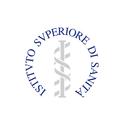In short
Nanocellulose (NC) is a novel food that is increasingly applied in food as food additive and in food packaging. The various types of this manufactured nanomaterial with a fibrous shape require a thorough risk assessment, because their nanoscale characteristics may influence its toxic kinetic behaviour. The main questions asked are:
- Are the nano-sized fibres able to cross the intestinal epithelium?
- Is the uptake driven by the physicochemical properties of the nanofibres, leading to selective uptake of nanofibres with specific characteristics?
- Are there hazardous properties of cellulose nanofibres and what is their possible relationship with characteristics of the material (e.g. length/shape of the fibres)?
- What is the fate of NC in the human gastrointestinal tract?
Project description
To understand the influence of the nanoscale characteristics of nanocellulose (NC), we aim to
- design and conduct a set of new approach method (NAM)-based studies for addressing the current data gaps on NC hazards and
- offer a proposal for including the results in the regulatory hazard assessment of NC for consumers exposed via food.
This is done in several steps, starting with in vitro tests followed by several tiered studies.
In vitro tests
A battery of in vitro tests provides insight into the NC hazard and its mode of action and assesses if there is a relationship between toxicity and physicochemical characteristics. Mono- and co-culture cell systems are used and specific endpoints are being considered to investigate potential effects of NC such as:
- impaired cell viability/cytotoxicity
- oxidative stress responses
- (pro-)inflammatory responses
- integrity of the gastrointestinal barrier.
Tiered studies
Tier 1 studies aim to obtain a maximum amount of information on the cellular responses following exposure to a panel of NC materials belonging to the three NC types.
Tier 2 focuses on:
- digestion or degradation, including surface modifications, of NC by the human microbiome
- assessment of the uptake and potential crossing of the intestinal barrier by NC
- assessment of local effects, including inflammation and genotoxicity, of NC on the gastrointestinal epithelium.
In Tier 3 testing repeated dose toxicity is investigated. We develop a suitable dispersion and a thorough physicochemical characterization of the pristine material and in situ visualization (i.e. in cells, in colonic samples) of NC using transmission electron microscope (TEM) is carried out. Experimental studies are being performed so as to ensure that the results are relevant and reliable in the perspective of their use for regulatory risk assessment.
Specific indications for using the results of the above studies in the assessment of NC as novel food, as food additive and in other application areas are provided. Finally, a strategy for the dissemination of the results and incorporating the NAM-based results in the regulatory risk assessment is outlined.
Sciensano's project investigator(s):
Service(s) working on this project
Partners





